Verdict
An accessible and enjoyable pair of open-backed, over-ear headphones from Sivga that are very comfortable to wear and appeal with a lush, but natural sound.
Pros
- Excellent comfort levels
- Great aesthetics
- Lush, smooth, and expressive audio performance
- Easy to drive
Cons
- Not the widest soundstage for an open-backed pair
- Other headphones exhibit better definition, more sharpness
-
DesignOpen-backed design for a more spacious soundstage -
DriversLarge 50mm dynamic drivers for audio reproduction -
EarpadsEarpads and headband made from skin-friendly velvet
Introduction
There was a time when the future of wired headphones looked grim. Smartphones were ditching 3.5mm jacks in their droves and wireless headphones were in the ascendancy. Few wanted to get tangled with the cables of a wired headphone.
But, for whatever reason, wired headphones refused to lay down. If anything, they’ve become resurgent, whether connected through a standard cable or USB-C, they’re still a popular and preferred option for some.
And one brand looking to capitalize on it is Sivga. It has launched headphones at a prodigious rate over the past two years, increasing its presence in the UK market, especially with the Luan.
These headphones aren’t necessarily pitched at the audiophile market, sitting somewhere between audiophile ambition and a more mainstream sound.
Design
- Cushy comfort
- Great looks
- Open-backed design
These headphones feel great on the head. I don’t believe there’s been a Sivga (or Sendy) headphone that I’ve not liked in terms of comfort, and the Luan continue that trend with a plush fit.
The material used for both the headband and earpads is skin-friendly velvet and the earpads are so large that I feel as if they’re smothering my head (in a good way), though those with smaller heads may find it too consuming. The clamping force is loose, which adds to the comfort levels, though there is a little bit of shifting if you give your head a wiggle.
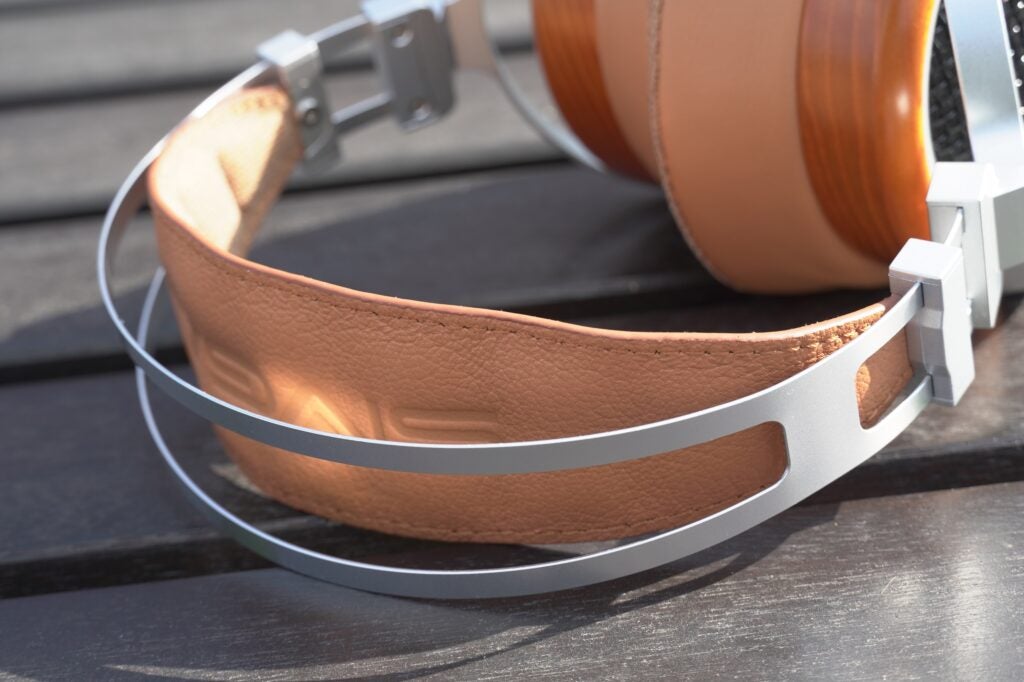
Nevertheless, these headphones could be worn for extended periods of listening (I’ve worn them for longer than an hour) and not invoke much, if any fatigue. Considering the Luan weigh 354g – they don’t feel that heavy on my head.
The earcups are hand-made from wood (with brown and black versions), while the frame of the headphones makes use of metal parts made through CNC machining. The appearance is one that’s both natural and slightly industrial, but elegant for it. I especially dig the brown version.
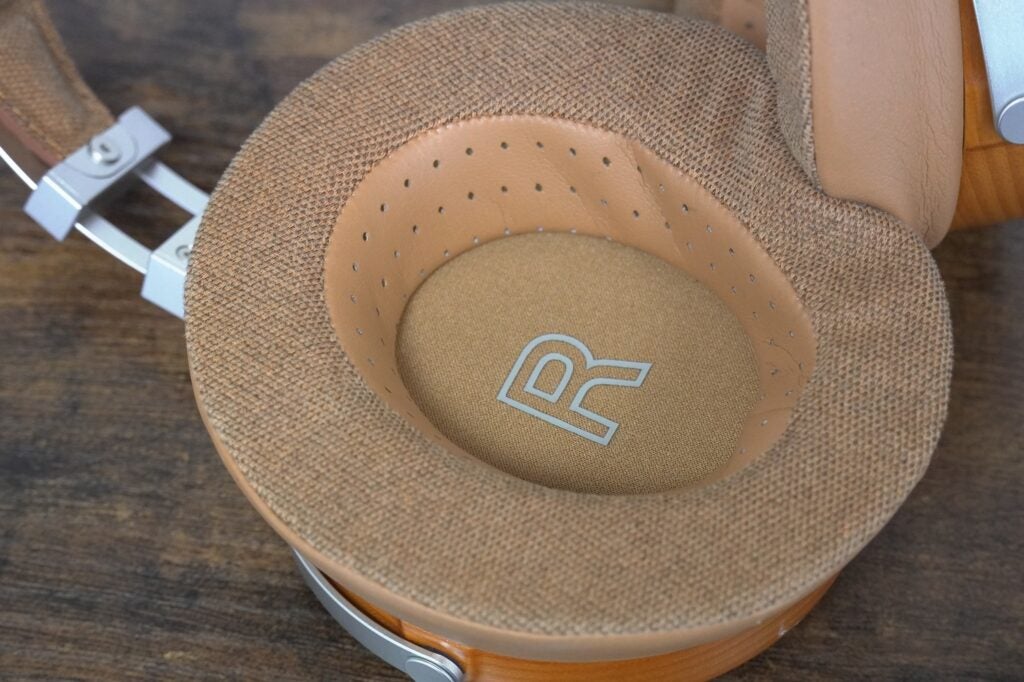
These are open-backed headphones – you can tell from the grille on the wooden earcups – and that means the Luan is a headphone that will leak out the sound you’re hearing as well as allow you to hear what’s around you. This might be an issue if these headphones are used outside of the home, but from what I can hear, leakage is kept to a minimum. Given the size, the Sivga Luan aren’t the most portable, at least compared to a wireless headphone. All signs point to this headphone best being utilized in a home setting.
There’s a detachable 1.6m cable that terminates in a 3.5mm jack, a 6.3mm adapter, and a giant hard carry case to store the headphones in.
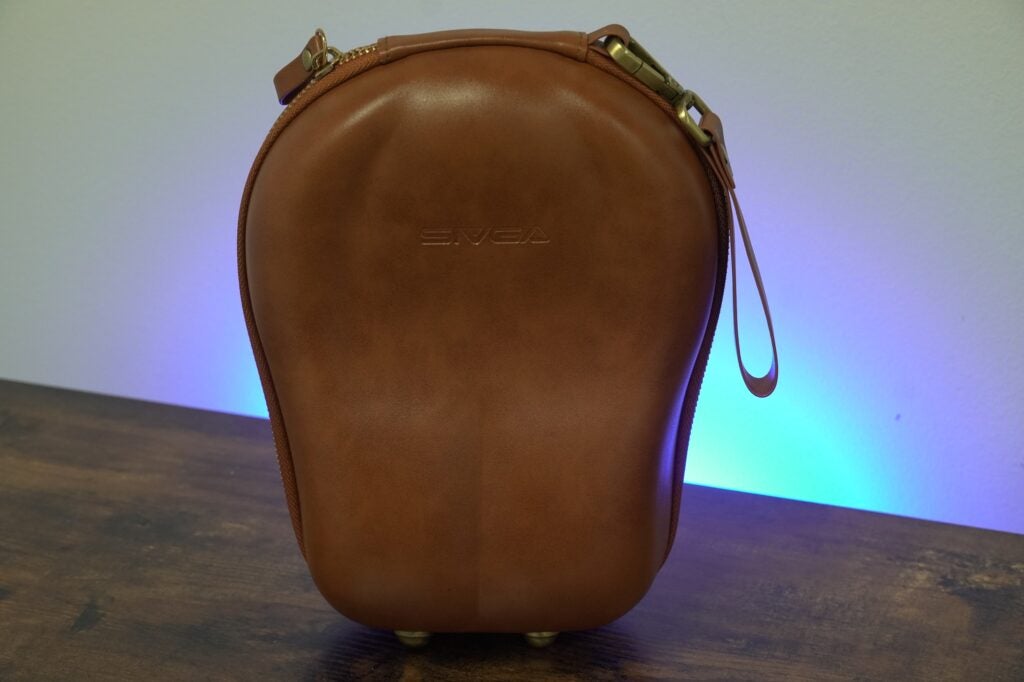
Features
- Easy to drive
- Wide frequency response
- Dynamic driver
There’s never much to talk about in terms of features for wired headphones compared to their wireless counterparts, so this section will be brief.
Impedance is rated at 38ohms, which signifies that these headphones will be easier to drive than most, whether they’re connected to a laptop, smartphone, or other mobile device with a 3.5mm jack. For the purposes of this review, I used the Sivga Luan mostly with a Chord Mojo 2 DAC and Astell & Kern A&norma SR35 player. Sensitivity is rated at 100dB, which is a gauge that they can get fairly loud when pushed.
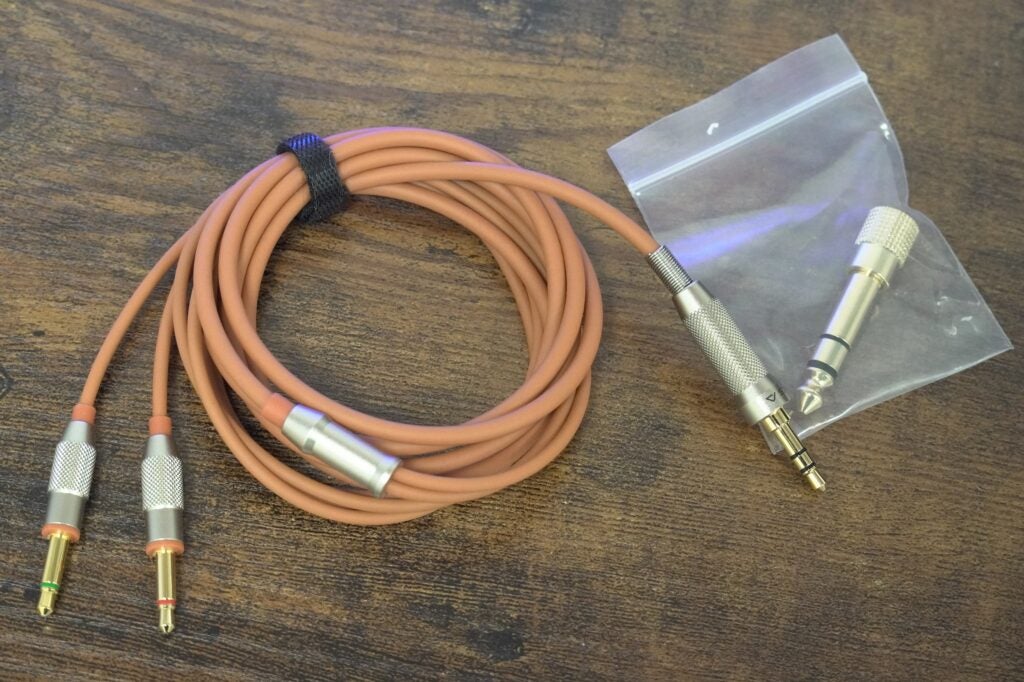
The frequency response covers 20Hz to 40kHz, indicating these headphones are suited to playing Hi-Res Audio files. The driver used is dynamic, the diaphragm features nickel coating on the edge that’s claimed to be useful in terms of rigidity and elasticity, helping to describe deep and smooth bass, as well as layered midrange frequencies.
The dome area is made from a macromolecule organic carbon fibre composite, which sounds very fancy, and absorbs and suppresses excessive vibration to reproduce treble in a non-sharp but clear way.
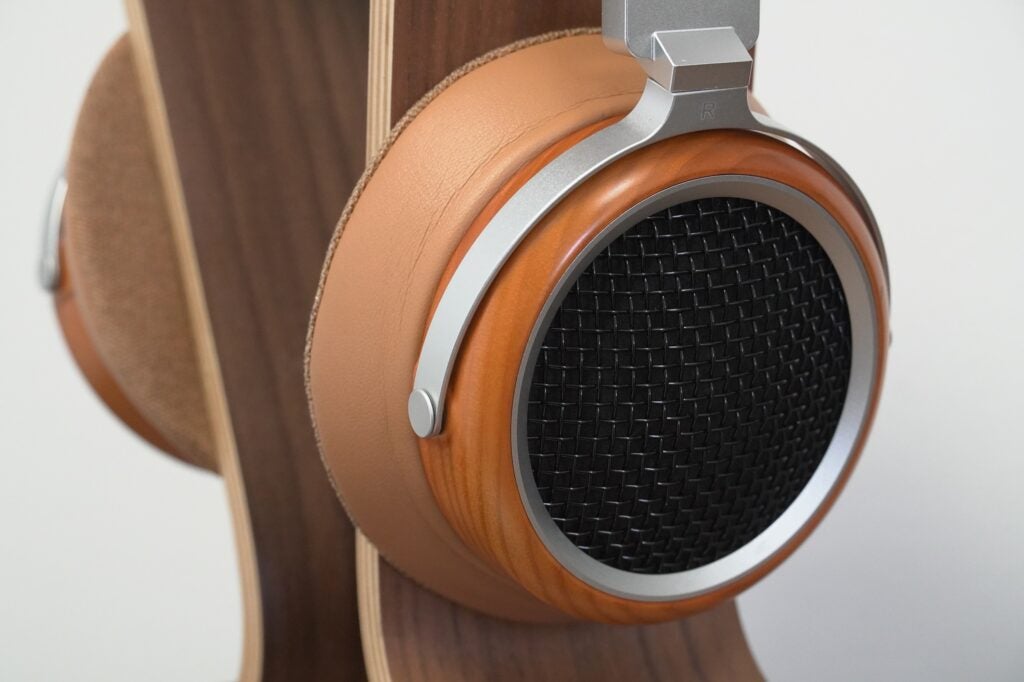
Sound Quality
- Punchy, slightly warm bass
- Entertaining treble reproduction
- Not the widest soundstage
As you may be able to tell from the description of the dynamic drive unit, the tuning of the Sivga Luan does not take on an analytical approach. There’s a lush, comfy approach these headphones take that’s still loaded with naturalism. They sound very good.
A play of Esperanza Spalding’s I Know You Know, there’s a pleasing smoothness and clarity to her voice, capturing the small dynamic inflections of vocals well. The way the soundstage is described, her voice (and instruments in general) are brought closer to the listener, creating the sense of being immersed in the recording.
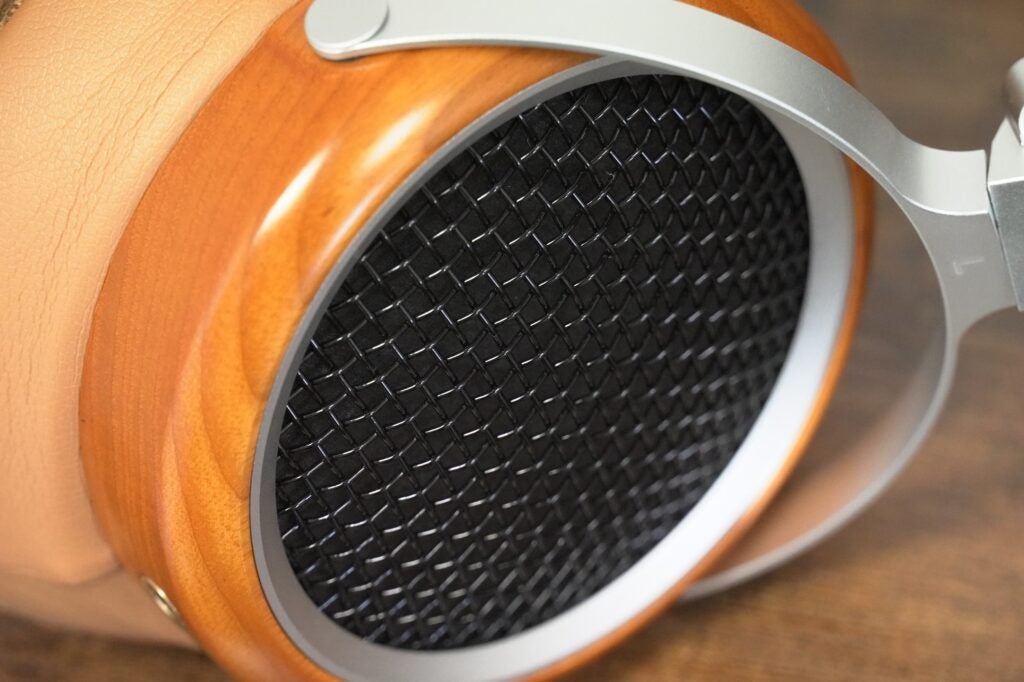
Initially, I thought the pair boasted more warmth (wooden headphones tend to have this characteristic), but the headphones sound more lush than rich, with a slight sense of warmth to their tone. Crispness isn’t what they’re interested in, cymbal crashes are smoothly defined, and sharpness isn’t high on the list of priorities either. They’re not interested in being analytical, but the naturalism of the sound offers an enjoyable level of insight into recordings.
With Labrinth’s All For Us, it’s a similar performance, Zendaya’s voice sits in the middle of the soundstage and occupies a large space within it. The reproduction of bass is at times punchy, at other times it has a slightly softer and warm tone (Talking Heads’ Found a Job via Qobuz on the SR35 player). I wouldn’t describe the bass as deep or resonant, despite what Sivga says, but the Luan doesn’t overemphasize the bass frequencies either. I imagine some will want more depth and assertiveness from the low end than these headphones provide.
Sivga’s goal with the high frequencies is to treat them with a lack of sharpness. I take this to mean that the intention is not to be overly bright to the point of harshness – an aspect I felt was a little too pointed with Sivga’s Oriole headphones. Here the treble seems well pitched: bright, varied, and dynamic with a listen to Bill Evan’s jazzy recording of All Of You on Qobuz.
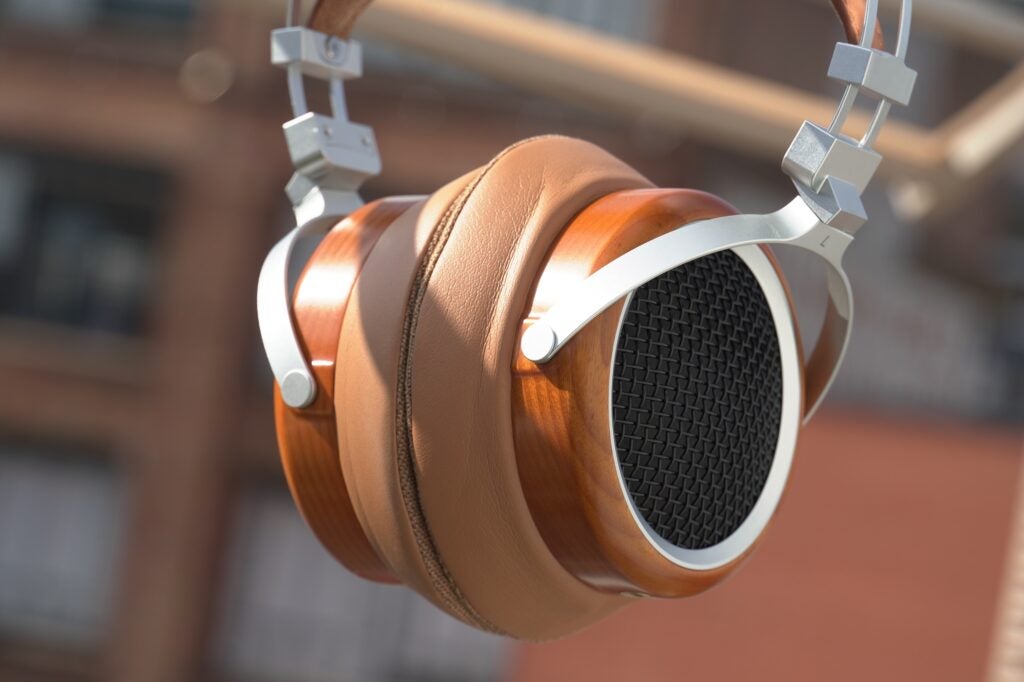
There’s a richness to the high frequencies that draw out detail and information, giving the song a lively feel without overdoing it. Again, the midrange sounds clear, and instruments are naturally conveyed. There’s not the greatest amount of sharpness these headphones bring to bear, but the song sounds great, nonetheless.
It’s worth considering using these headphones with a capable DAC or music player to wring out a better sense of definition and clarity than plugging them straight into the source. They still retain the same characteristics, but a little more refinement with these headphones goes a long way to unlocking more of their potential.
The one aspect I’m not wholly convinced by is the width of the soundstage. While it’s described in spacious terms, I don’t feel the soundstage is much wider than a closed-back headphone. With singers’ vocals taking up space and focus in the middle of the soundstage, it does give the impression that the soundstage is a little squashed out to the sides.
Latest deals
Should you buy it?
If you like a smooth and lush audio presentation
The Sivga Luan aren’t trying to be affordable audiophile headphones like the FiiO FT3, but their sonic signature is a more accessible one.
If you want more detail and sharpness
Detail levels are good, and better when paired with a capable DAC, but the Luan offers a more comfortable sound rather than an analytical one.
Final Thoughts
The Luan reminded me of Sivga’s SV023, though those headphones were much harder to drive than the Luan, making this pair of headphones a much more accessible option.
And they sound very good with satisfying levels of detail retrieval, clear bass performance, and a pleasing treble performance.
They’re pitched at the same price as the FiiO FT3 though aren’t as analytical a listen as those headphones, but the naturalism impresses, the design is great, and they’re very comfortable to wear. Not quite Sivga’s best headphone but one of the more accessible efforts so far.
How we test
We test every set of headphones we review thoroughly over an extended period of time. We use industry standard tests to compare features properly. We’ll always tell you what we find. We never, ever, accept money to review a product.
Find out more about how we test in our ethics policy.
Tested across several days
Tested with real world use
FAQs
The Luan are fairly easy to drive with an impedance rating of 38 ohms, so you could plug them a mobile device/desktop with 3.5mm jack, though you’ll get a better performance if you add a DAC/headphone amplifier
Verdict
An accessible and enjoyable pair of open-backed, over-ear headphones from Sivga that are very comfortable to wear and appeal with a lush, but natural sound.
Pros
- Excellent comfort levels
- Great aesthetics
- Lush, smooth, and expressive audio performance
- Easy to drive
Cons
- Not the widest soundstage for an open-backed pair
- Other headphones exhibit better definition, more sharpness
-
DesignOpen-backed design for a more spacious soundstage -
DriversLarge 50mm dynamic drivers for audio reproduction -
EarpadsEarpads and headband made from skin-friendly velvet
Introduction
There was a time when the future of wired headphones looked grim. Smartphones were ditching 3.5mm jacks in their droves and wireless headphones were in the ascendancy. Few wanted to get tangled with the cables of a wired headphone.
But, for whatever reason, wired headphones refused to lay down. If anything, they’ve become resurgent, whether connected through a standard cable or USB-C, they’re still a popular and preferred option for some.
And one brand looking to capitalize on it is Sivga. It has launched headphones at a prodigious rate over the past two years, increasing its presence in the UK market, especially with the Luan.
These headphones aren’t necessarily pitched at the audiophile market, sitting somewhere between audiophile ambition and a more mainstream sound.
Design
- Cushy comfort
- Great looks
- Open-backed design
These headphones feel great on the head. I don’t believe there’s been a Sivga (or Sendy) headphone that I’ve not liked in terms of comfort, and the Luan continue that trend with a plush fit.
The material used for both the headband and earpads is skin-friendly velvet and the earpads are so large that I feel as if they’re smothering my head (in a good way), though those with smaller heads may find it too consuming. The clamping force is loose, which adds to the comfort levels, though there is a little bit of shifting if you give your head a wiggle.

Nevertheless, these headphones could be worn for extended periods of listening (I’ve worn them for longer than an hour) and not invoke much, if any fatigue. Considering the Luan weigh 354g – they don’t feel that heavy on my head.
The earcups are hand-made from wood (with brown and black versions), while the frame of the headphones makes use of metal parts made through CNC machining. The appearance is one that’s both natural and slightly industrial, but elegant for it. I especially dig the brown version.

These are open-backed headphones – you can tell from the grille on the wooden earcups – and that means the Luan is a headphone that will leak out the sound you’re hearing as well as allow you to hear what’s around you. This might be an issue if these headphones are used outside of the home, but from what I can hear, leakage is kept to a minimum. Given the size, the Sivga Luan aren’t the most portable, at least compared to a wireless headphone. All signs point to this headphone best being utilized in a home setting.
There’s a detachable 1.6m cable that terminates in a 3.5mm jack, a 6.3mm adapter, and a giant hard carry case to store the headphones in.

Features
- Easy to drive
- Wide frequency response
- Dynamic driver
There’s never much to talk about in terms of features for wired headphones compared to their wireless counterparts, so this section will be brief.
Impedance is rated at 38ohms, which signifies that these headphones will be easier to drive than most, whether they’re connected to a laptop, smartphone, or other mobile device with a 3.5mm jack. For the purposes of this review, I used the Sivga Luan mostly with a Chord Mojo 2 DAC and Astell & Kern A&norma SR35 player. Sensitivity is rated at 100dB, which is a gauge that they can get fairly loud when pushed.

The frequency response covers 20Hz to 40kHz, indicating these headphones are suited to playing Hi-Res Audio files. The driver used is dynamic, the diaphragm features nickel coating on the edge that’s claimed to be useful in terms of rigidity and elasticity, helping to describe deep and smooth bass, as well as layered midrange frequencies.
The dome area is made from a macromolecule organic carbon fibre composite, which sounds very fancy, and absorbs and suppresses excessive vibration to reproduce treble in a non-sharp but clear way.

Sound Quality
- Punchy, slightly warm bass
- Entertaining treble reproduction
- Not the widest soundstage
As you may be able to tell from the description of the dynamic drive unit, the tuning of the Sivga Luan does not take on an analytical approach. There’s a lush, comfy approach these headphones take that’s still loaded with naturalism. They sound very good.
A play of Esperanza Spalding’s I Know You Know, there’s a pleasing smoothness and clarity to her voice, capturing the small dynamic inflections of vocals well. The way the soundstage is described, her voice (and instruments in general) are brought closer to the listener, creating the sense of being immersed in the recording.

Initially, I thought the pair boasted more warmth (wooden headphones tend to have this characteristic), but the headphones sound more lush than rich, with a slight sense of warmth to their tone. Crispness isn’t what they’re interested in, cymbal crashes are smoothly defined, and sharpness isn’t high on the list of priorities either. They’re not interested in being analytical, but the naturalism of the sound offers an enjoyable level of insight into recordings.
With Labrinth’s All For Us, it’s a similar performance, Zendaya’s voice sits in the middle of the soundstage and occupies a large space within it. The reproduction of bass is at times punchy, at other times it has a slightly softer and warm tone (Talking Heads’ Found a Job via Qobuz on the SR35 player). I wouldn’t describe the bass as deep or resonant, despite what Sivga says, but the Luan doesn’t overemphasize the bass frequencies either. I imagine some will want more depth and assertiveness from the low end than these headphones provide.
Sivga’s goal with the high frequencies is to treat them with a lack of sharpness. I take this to mean that the intention is not to be overly bright to the point of harshness – an aspect I felt was a little too pointed with Sivga’s Oriole headphones. Here the treble seems well pitched: bright, varied, and dynamic with a listen to Bill Evan’s jazzy recording of All Of You on Qobuz.

There’s a richness to the high frequencies that draw out detail and information, giving the song a lively feel without overdoing it. Again, the midrange sounds clear, and instruments are naturally conveyed. There’s not the greatest amount of sharpness these headphones bring to bear, but the song sounds great, nonetheless.
It’s worth considering using these headphones with a capable DAC or music player to wring out a better sense of definition and clarity than plugging them straight into the source. They still retain the same characteristics, but a little more refinement with these headphones goes a long way to unlocking more of their potential.
The one aspect I’m not wholly convinced by is the width of the soundstage. While it’s described in spacious terms, I don’t feel the soundstage is much wider than a closed-back headphone. With singers’ vocals taking up space and focus in the middle of the soundstage, it does give the impression that the soundstage is a little squashed out to the sides.
Latest deals
Should you buy it?
If you like a smooth and lush audio presentation
The Sivga Luan aren’t trying to be affordable audiophile headphones like the FiiO FT3, but their sonic signature is a more accessible one.
If you want more detail and sharpness
Detail levels are good, and better when paired with a capable DAC, but the Luan offers a more comfortable sound rather than an analytical one.
Final Thoughts
The Luan reminded me of Sivga’s SV023, though those headphones were much harder to drive than the Luan, making this pair of headphones a much more accessible option.
And they sound very good with satisfying levels of detail retrieval, clear bass performance, and a pleasing treble performance.
They’re pitched at the same price as the FiiO FT3 though aren’t as analytical a listen as those headphones, but the naturalism impresses, the design is great, and they’re very comfortable to wear. Not quite Sivga’s best headphone but one of the more accessible efforts so far.
How we test
We test every set of headphones we review thoroughly over an extended period of time. We use industry standard tests to compare features properly. We’ll always tell you what we find. We never, ever, accept money to review a product.
Find out more about how we test in our ethics policy.
Tested across several days
Tested with real world use
FAQs
The Luan are fairly easy to drive with an impedance rating of 38 ohms, so you could plug them a mobile device/desktop with 3.5mm jack, though you’ll get a better performance if you add a DAC/headphone amplifier
























